MERCEDES-BENZ GLC SUV 2015 Owners Manual
Manufacturer: MERCEDES-BENZ, Model Year: 2015, Model line: GLC SUV, Model: MERCEDES-BENZ GLC SUV 2015Pages: 497, PDF Size: 15.27 MB
Page 491 of 497
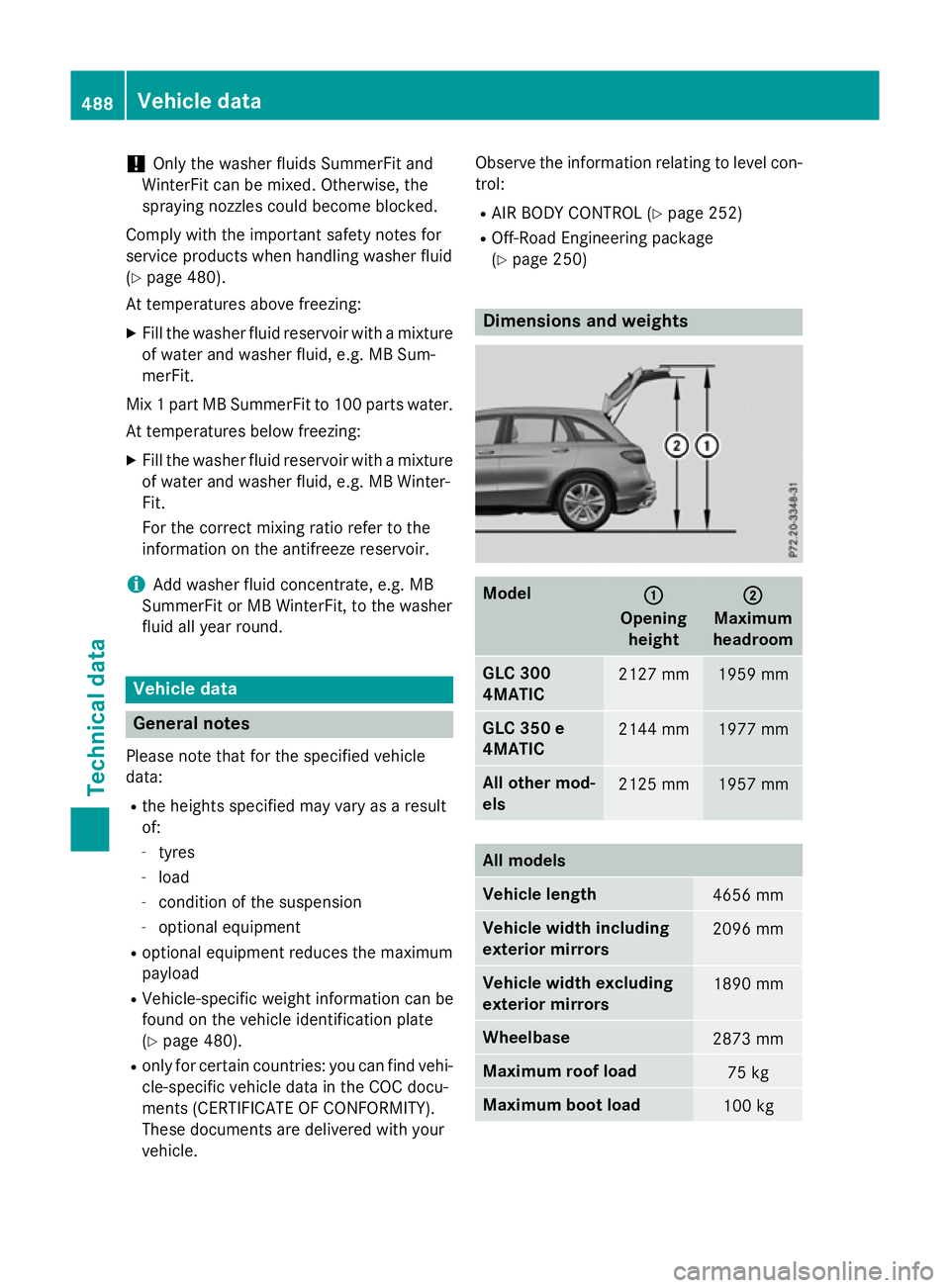
!
Only the washer fluids SummerFit and
WinterFit can be mixed. Otherwise, the
spraying nozzles could become blocked.
Comply with the important safety notes for
service products when handling washer fluid
(Y page 480).
At temperatures above freezing:
X Fill the washer fluid reservoir with a mixture
of water and washer fluid, e.g. MB Sum-
merFit.
Mix 1 part MB SummerFit to 100 parts water.
At temperatures below freezing:
X Fill the washer fluid reservoir with a mixture
of water and washer fluid, e.g. MB Winter-
Fit.
For the correct mixing ratio refer to the
information on the antifreeze reservoir.
i Add washer fluid concentrate, e.g. MB
SummerFit or MB WinterFit, to the washer
fluid all year round. Vehicle data
General notes
Please note that for the specified vehicle
data: R the heights specified may vary as a result
of:
- tyres
- load
- condition of the suspension
- optional equipment
R optional equipment reduces the maximum
payload
R Vehicle-specific weight information can be
found on the vehicle identification plate
(Y page 480).
R only for certain countries: you can find vehi-
cle-specific vehicle data in the COC docu-
ments (CERTIFICATE OF CONFORMITY).
These documents are delivered with your
vehicle. Observe the information relating to level con-
trol:
R AIR BODY CONTROL (Y page 252)
R Off-Road Engineering package
(Y page 250) Dimensions and weights
Model
: :
Opening height ;
;
Maximum
headroom GLC 300
4MATIC
2127 mm 1959 mm
GLC 350 e
4MATIC
2144 mm 1977 mm
All other mod-
els
2125 mm 1957 mm
All models
Vehicle length
4656 mm
Vehicle width including
exterior mirrors
2096 mm
Vehicle width excluding
exterior mirrors
1890 mm
Wheelbase
2873 mm
Maximum roof load
75 kg
Maximum boot load
100 kg488
Vehicle dataTechnical data
Page 492 of 497
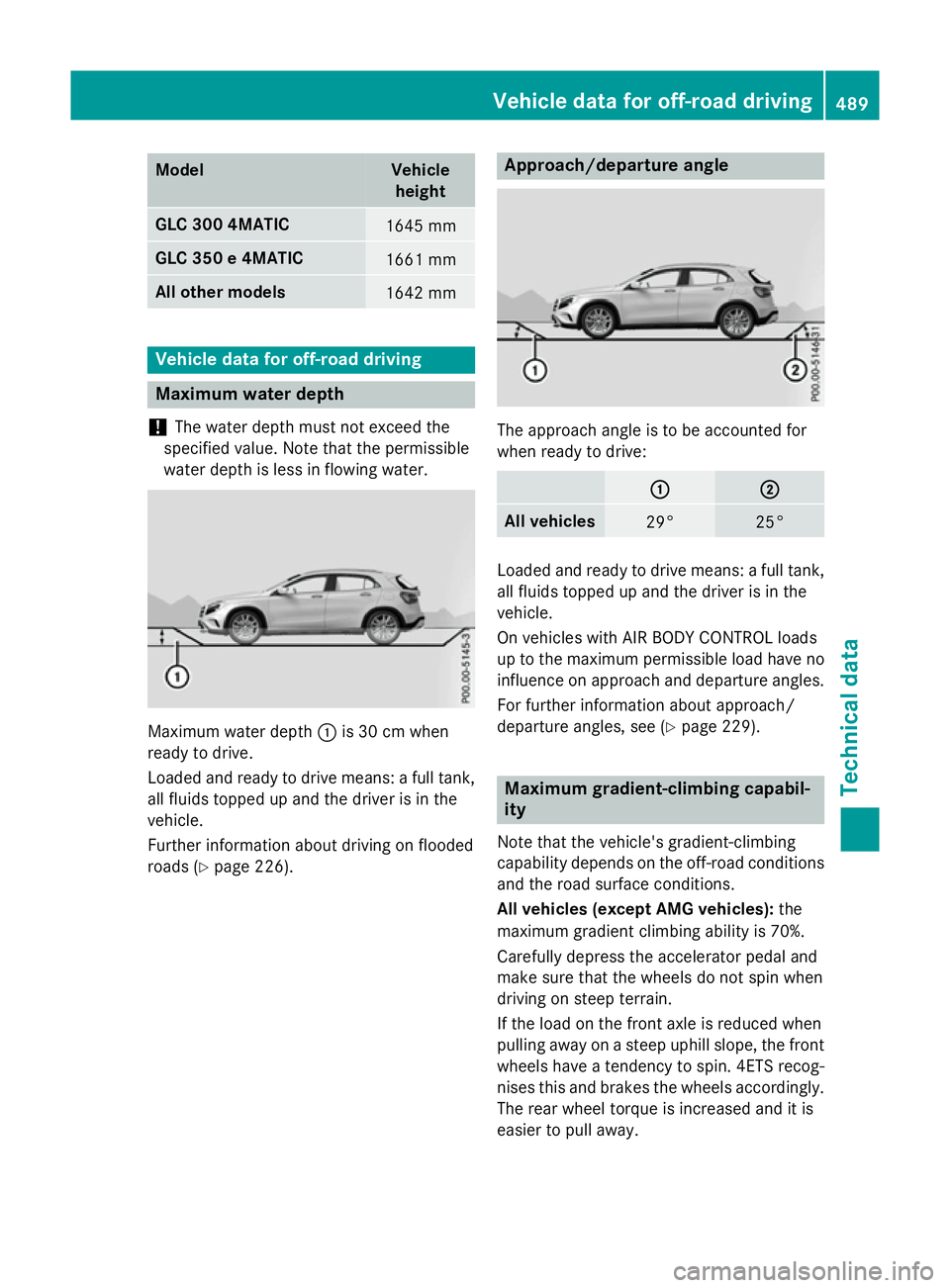
Model Vehicle
height GLC 300 4MATIC
1645 mm
GLC 350 e 4MATIC
1661 mm
All other models
1642 mm
Vehicle data for off-road driving
Maximum water depth
! The water depth must not exceed the
specified value. Note that the permissible
water depth is less in flowing water. Maximum water depth
:is 30 cm when
ready to drive.
Loaded and ready to drive means: a full tank, all fluids topped up and the driver is in the
vehicle.
Further information about driving on flooded
roads (Y page 226). Approach/departure angle
The approach angle is to be accounted for
when ready to drive:
: : ;
;
All vehicles
29° 25°
Loaded and ready to drive means: a full tank,
all fluids topped up and the driver is in the
vehicle.
On vehicles with AIR BODY CONTROL loads
up to the maximum permissible load have no
influence on approach and departure angles.
For further information about approach/
departure angles, see (Y page 229). Maximum gradient-climbing capabil-
ity
Note that the vehicle's gradient-climbing
capability depends on the off-road conditions and the road surface conditions.
All vehicles (except AMG vehicles): the
maximum gradient climbing ability is 70%.
Carefully depress the accelerator pedal and
make sure that the wheels do not spin when
driving on steep terrain.
If the load on the front axle is reduced when
pulling away on a steep uphill slope, the front
wheels have a tendency to spin. 4ETS recog- nises this and brakes the wheels accordingly. The rear wheel torque is increased and it is
easier to pull away. Vehicle data for off-road driving
489Technical data Z
Page 493 of 497
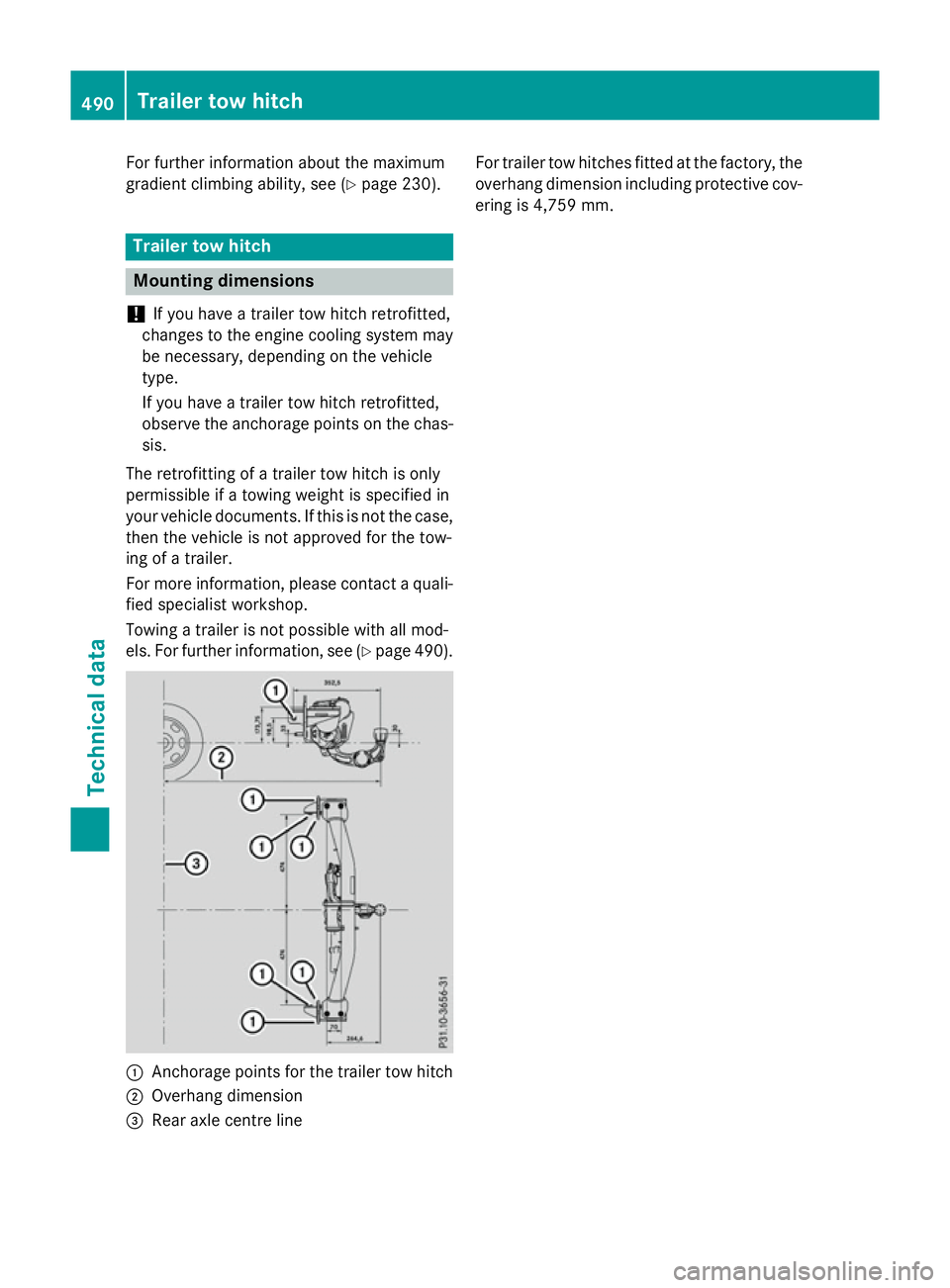
For further information about the maximum
gradient climbing ability, see (Y page 230).Trailer tow hitch
Mounting dimensions
! If you have a trailer tow hitch retrofitted,
changes to the engine cooling system may
be necessary, depending on the vehicle
type.
If you have a trailer tow hitch retrofitted,
observe the anchorage points on the chas- sis.
The retrofitting of a trailer tow hitch is only
permissible if a towing weight is specified in
your vehicle documents. If this is not the case,
then the vehicle is not approved for the tow-
ing of a trailer.
For more information, please contact a quali-
fied specialist workshop.
Towing a trailer is not possible with all mod-
els. For further information, see (Y page 490).:
Anchorage points for the trailer tow hitch
; Overhang dimension
= Rear axle centre line For trailer tow hitches fitted at the factory, the
overhang dimension including protective cov- ering is 4,759 mm. 490
Trailer tow hitchTechnical data
Page 494 of 497
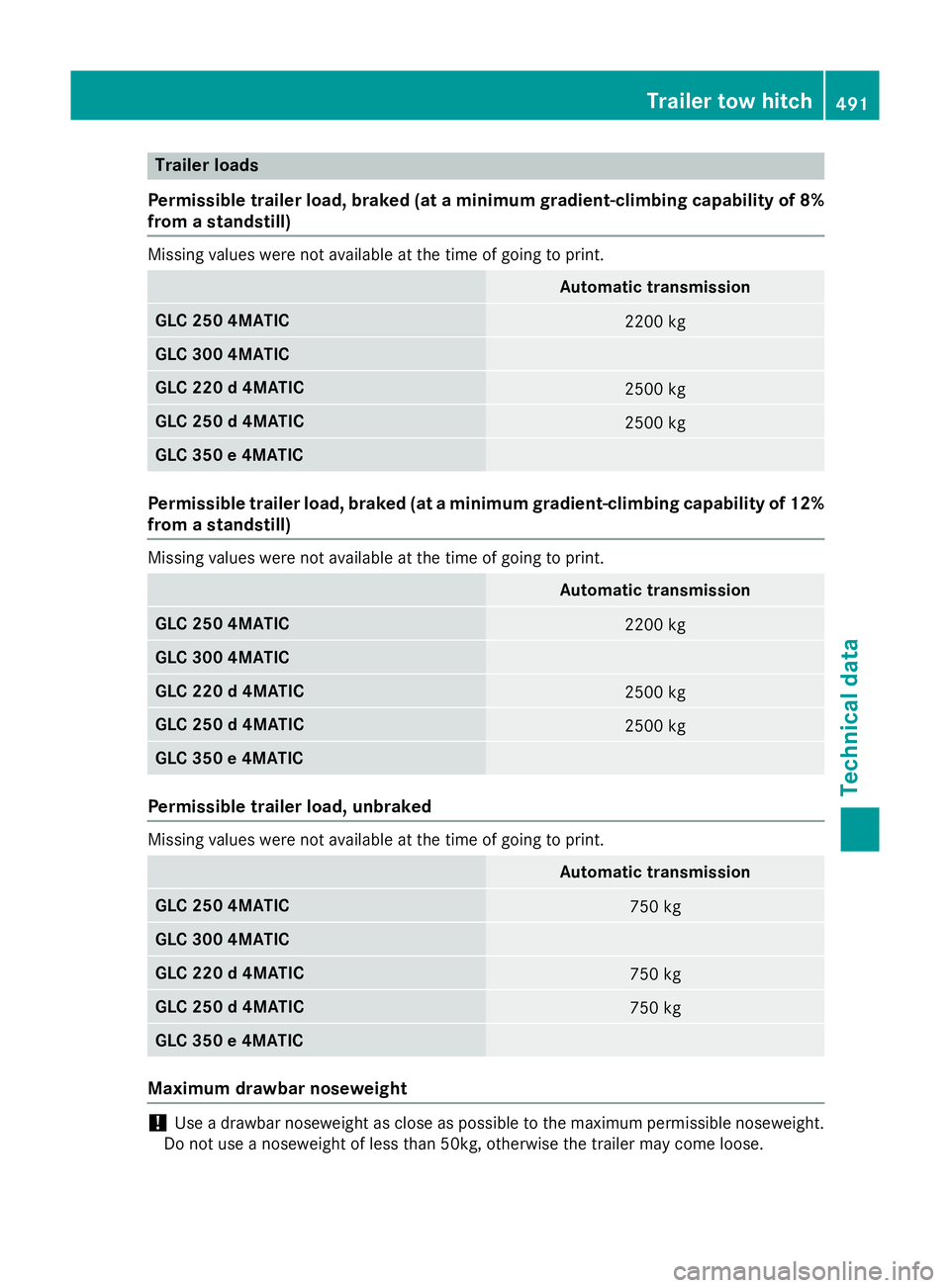
Trailer loads
Permissible trailer load, braked (at a minimum gradient-climbing capability of 8%
from a standstill) Missing values were not available at the time of going to print.
Automatic transmission
GLC 250 4MATIC
2200 kg
GLC 300 4MATIC
GLC 220 d 4MATIC
2500 kg
GLC 250 d 4MATIC
2500 kg
GLC 350 e 4MATIC
Permissible trailer load, braked (at a minimum gradient-climbing capability of 12%
from a standstill) Missing values were not available at the time of going to print.
Automatic transmission
GLC 250 4MATIC
2200 kg
GLC 300 4MATIC
GLC 220 d 4MATIC
2500 kg
GLC 250 d 4MATIC
2500 kg
GLC 350 e 4MATIC
Permissible trailer load, unbraked
Missing values were not available at the time of going to print.
Automatic transmission
GLC 250 4MATIC
750 kg
GLC 300 4MATIC
GLC 220 d 4MATIC
750 kg
GLC 250 d 4MATIC
750 kg
GLC 350 e 4MATIC
Maximum drawbar noseweight
!
Use a drawbar noseweight as close as possible to the maximum permissible noseweight.
Do not use a noseweight of less than 50kg, otherwise the trailer may come loose. Trailer tow hitch
491Technical data Z
Page 495 of 497
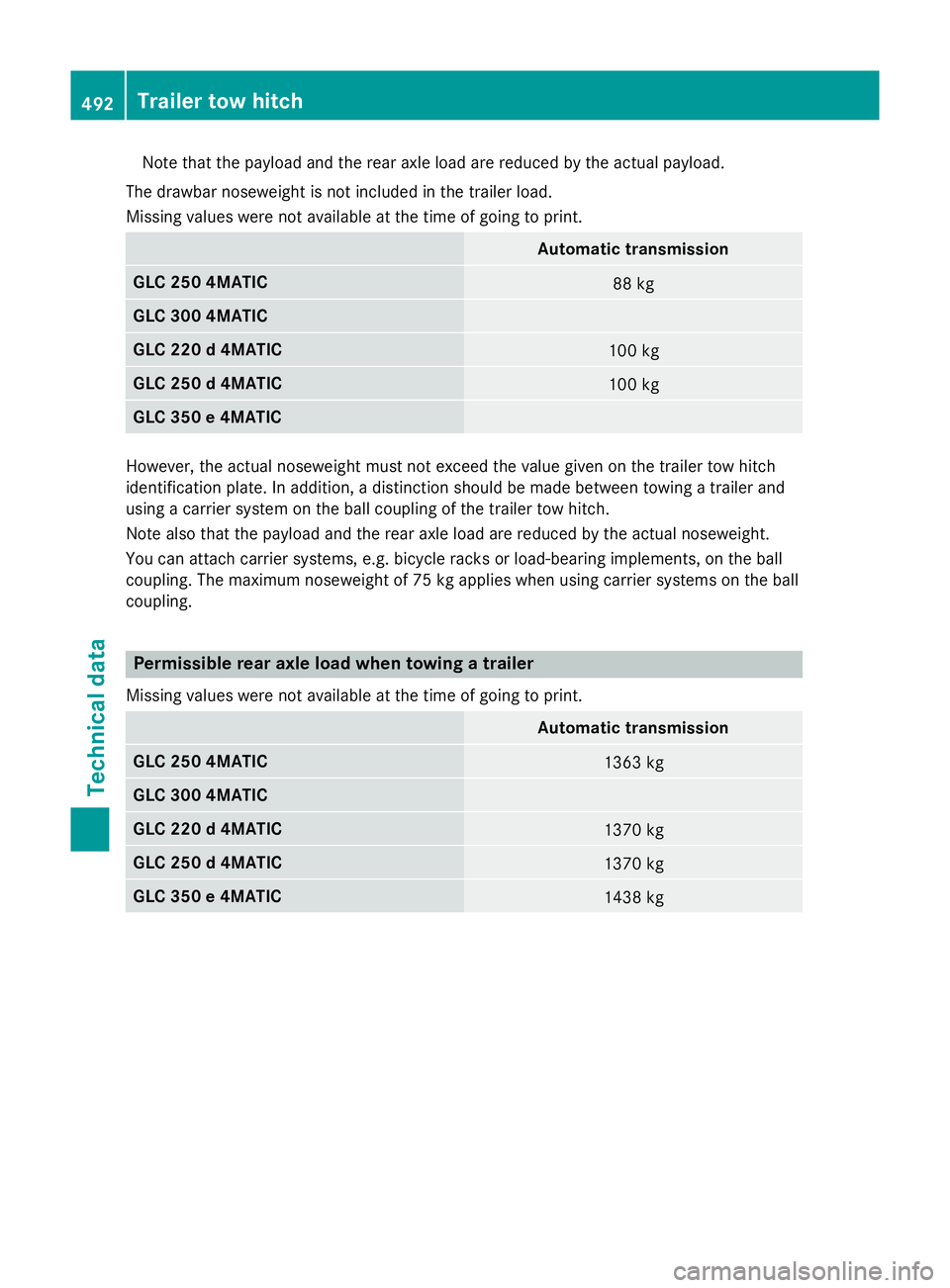
Note that the payload and the rear axle load are reduced by the actual payload.
The drawbar noseweight is not included in the trailer load.
Missing values were not available at the time of going to print. Automatic transmission
GLC 250 4MATIC
88 kg
GLC 300 4MATIC
GLC 220 d 4MATIC
100 kg
GLC 250 d 4MATIC
100 kg
GLC 350 e 4MATIC
However, the actual noseweight must not exceed the value given on the trailer tow hitch
identification plate. In addition, a distinction should be made between towing a trailer and
using a carrier system on the ball coupling of the trailer tow hitch.
Note also that the payload and the rear axle load are reduced by the actual noseweight.
You can attach carrier systems, e.g. bicycle racks or load-bearing implements, on the ball
coupling. The maximum noseweight of 75 kg applies when using carrier systems on the ball
coupling. Permissible rear axle load when towing a trailer
Missing values were not available at the time of going to print. Automatic transmission
GLC 250 4MATIC
1363 kg
GLC 300 4MATIC
GLC 220 d 4MATIC
1370 kg
GLC 250 d 4MATIC
1370 kg
GLC 350 e 4MATIC
1438 kg492
Trailer tow hitchTechnical data
Page 496 of 497
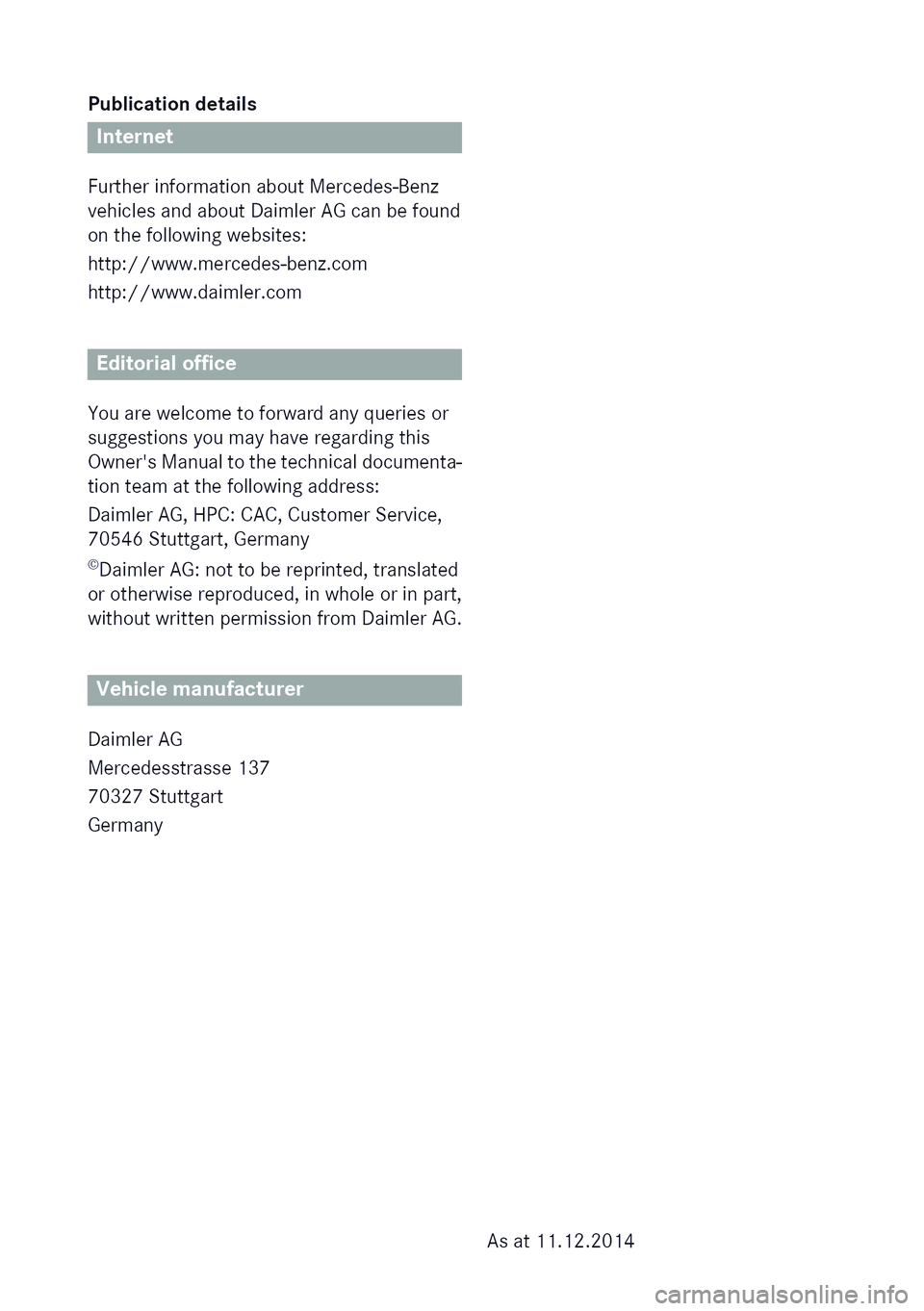
Page 497 of 497
